Tenerife and the night sky
Visiting Tenerife, the largest of the Canary Islands was one of the best adventures. After several days, when I could scout this picturesque place I spent one night above the unique low-level clouds. It was a fantastic experience because I have not seen that pristine sky before.
The day, when I set my observation place could have looked much different. We planned to stay in the Refugio Altavista hut straight after reaching the Mount Teide summit. Unfortunately around 3 weeks before our arrival, huge snow thunderstorms swept through the Teide caldera. As I remember from some pictures there was around 50 cm of snow cover near the Teide cable car upper station.
In general snow cover existed from around 2000 m.a.s.l. the altitude at that time. Despite the Sun, which shines very strongly the temperature at the highest altitudes is not high. There were around 0-3 degrees during the day and light froze overnight. Once we came to Tenerife Mount Teide was still snow-capped, especially on the western slope. I had a hope, that in spite of many patches of snow, the trail to the summit would be open. It happened the worst, that could happen. Once we came on the Teide by cable car there were bans and a few guards. The entrance on a trail both to the summit and to the Refugio Altavista hut was forbidden. Due to those circumstances, we had to call off our reservation in the hut and find another place to “sleep” that night. Anyway looking for the island from there could have felt like flightseeing being outside the plane! This place contains around 1/3 of flight altitude. Simply awesome!
Because of snow and irritating rules in Teide National Park, our trip plan has been brought up. I was not happy about that, trying to find another way to get to the Refugio Altavista by hike. On top of that, the car park located close to the trail leading to the hut via Montana Blanca was completely full. I was not happy about visiting Teide Observatory on the same day. I would rather enjoy an amazing view from the Teide summit, smell the sulfur from the volcano, and visit the observatory the next day. We were not lucky that day at all. Being en route to Teide Observatory I hit a small stone, that caused a flat tire. After that, I replaced the wheel and had to go to the Europcar rental located at the Tenerife North airport. Fortunately, it was according to our route.
We reached the Teide Observatory around 5 p.m., more or less 1,5 hours before sunset. I was fortunate to visit the Observatory area. The man, who met me on the road behind the ban led me to stay there for 20 minutes only. It was enough for me to take pictures and enjoy the view. I can admit, that this place is really nice. There are a dozen or so objects, that belong to several countries in the World. To be straightforward this observatory is said to be one of three the best located astronomical observatories in the World after the Atacama and Mauna Kea observatories. The key attitude for this place is the altitude, which incurs a clear sky for most of the year because the cloud coverage is usually beneath. The observatory is located around 2400 m.a.s.l. slightly higher than the neighbor observatory on La Palma island. This place provides excellent conditions for gazing at stars. The atmosphere at this altitude is rarer.
The Teide Observatory was launched in 1964. Actually, the observatory area is located with 4 solar, 8 nocturnal, and 4 radio telescopes.

Pic. 4 One of the QUIJOTE telescopes, inaugurated in 2015, that are aimed at observations of the Milky Way.
Saying a few words about the Teide Observatory it is good to mention, that all objects are white. In effect, they have as high albedo as they can, and all sunlight is reflected. It prevents unsettled air movements, which could have a bad influence on the observation results. Basically, this observatory complex is focused on radial and solar observations. One of the objects is a telescope from the Institute of Astronomy University of Cambridge, which has been installed here recently. Those initiatives stress the International range of this complex.
I don’t want to elaborate more about the Teide observatory. You can read more here.
I would like to describe my personal observation carried out literally next to the Teide Observatory complex. We spent the night in our car! The temperature was really low, finally dropping to around -5 at the dawn I think. Besides the patched snow cover still existed. My girlfriend stayed in the car. I was strongly determined to have a great stargazing adventure.
I started my observation around 20 minutes before sunset. When the Sun plunged deeper into the evening sky Mount Teide started to cast a beautiful shadow across the island, which subsequently covered further and further reaching the cloud layer above the ocean. It was beautiful. Because I had not seen it before in my life I was gazing and taking pictures. After the sunset, this shadow covered the lowest part of the sky making a different color of the twilight wedge, which was separated by a triangle-looking figure. It was great!
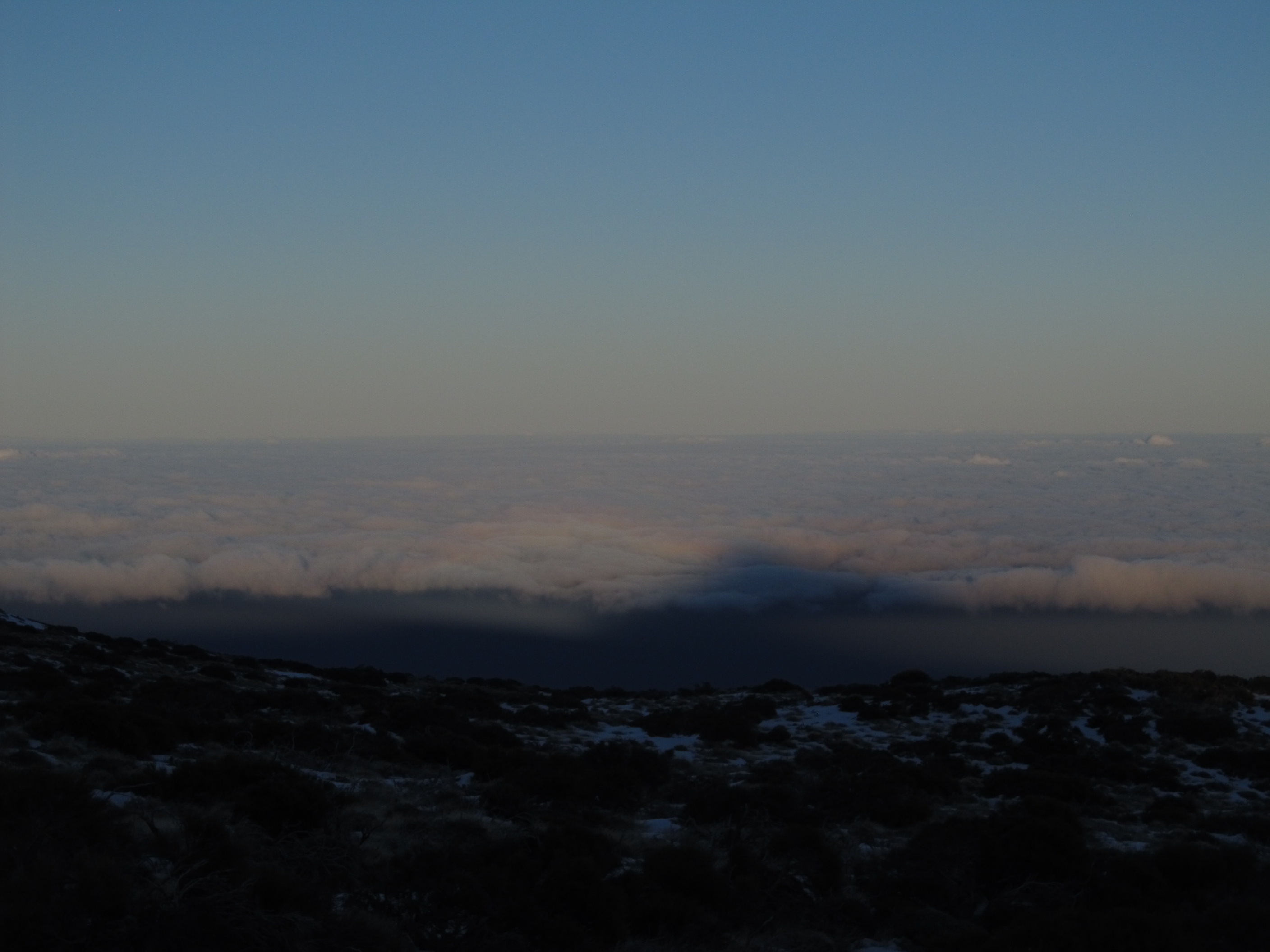
Pic. 8 Shadow of the Teide summit seen on the cloud layer. Sun was setting right of the summit, so I could see the glory on the left.
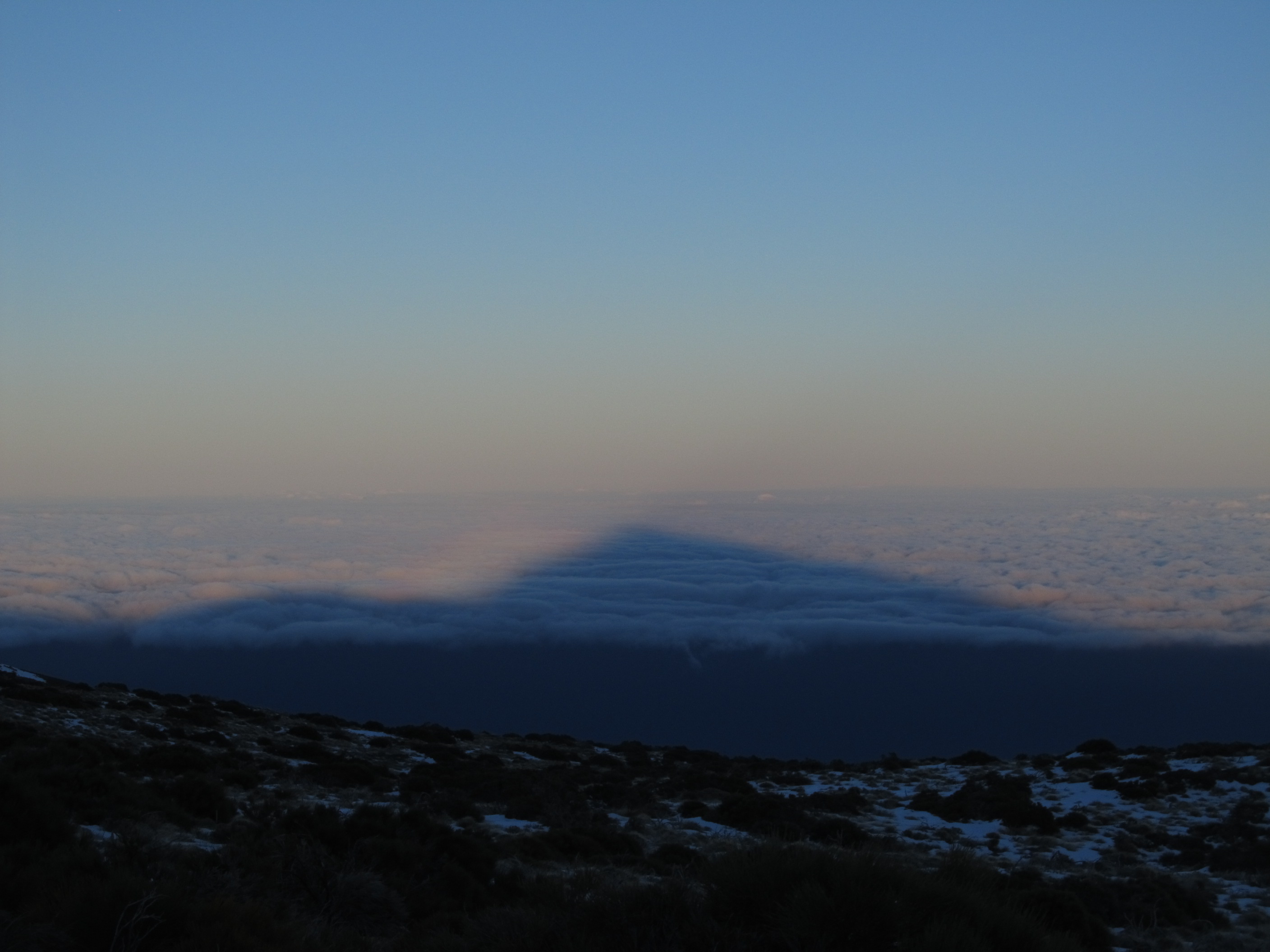
Pic. 9 Shadow of the Mount Teide seen on the cloud layer. See also the shadow in the air on the right.

Pic. 11 Twilight wedge modified by the shadow of Mount Teide summit, which rises nearly 4 km above sea level, and the caldera with nearly 3 km altitude.
Observation of the twilight with all phenomena was the one, for which I was aimed at. I was going to collect some stuff from the high-altitude conditions. The twilight was short, which is typical for lower latitudes. Afterward, I was watching a fantastic zodiacal light, also for the first time.

Pic. 13 Fantastic zodiacal light seen just right of the Teide summit. Sun was around 17 deg below the horizon (orange light on the right); 15s, ISO 1600, F3.4.
During this overnight stay in the vicinity of the Teide Observatory, I was wondering about an excellent sky with approximately 7k stars to be seen by the naked eye! The artificial light was seen just above the horizon, which was partially covered by clouds. Moreover, the lights from Gran Canaria were also visible.
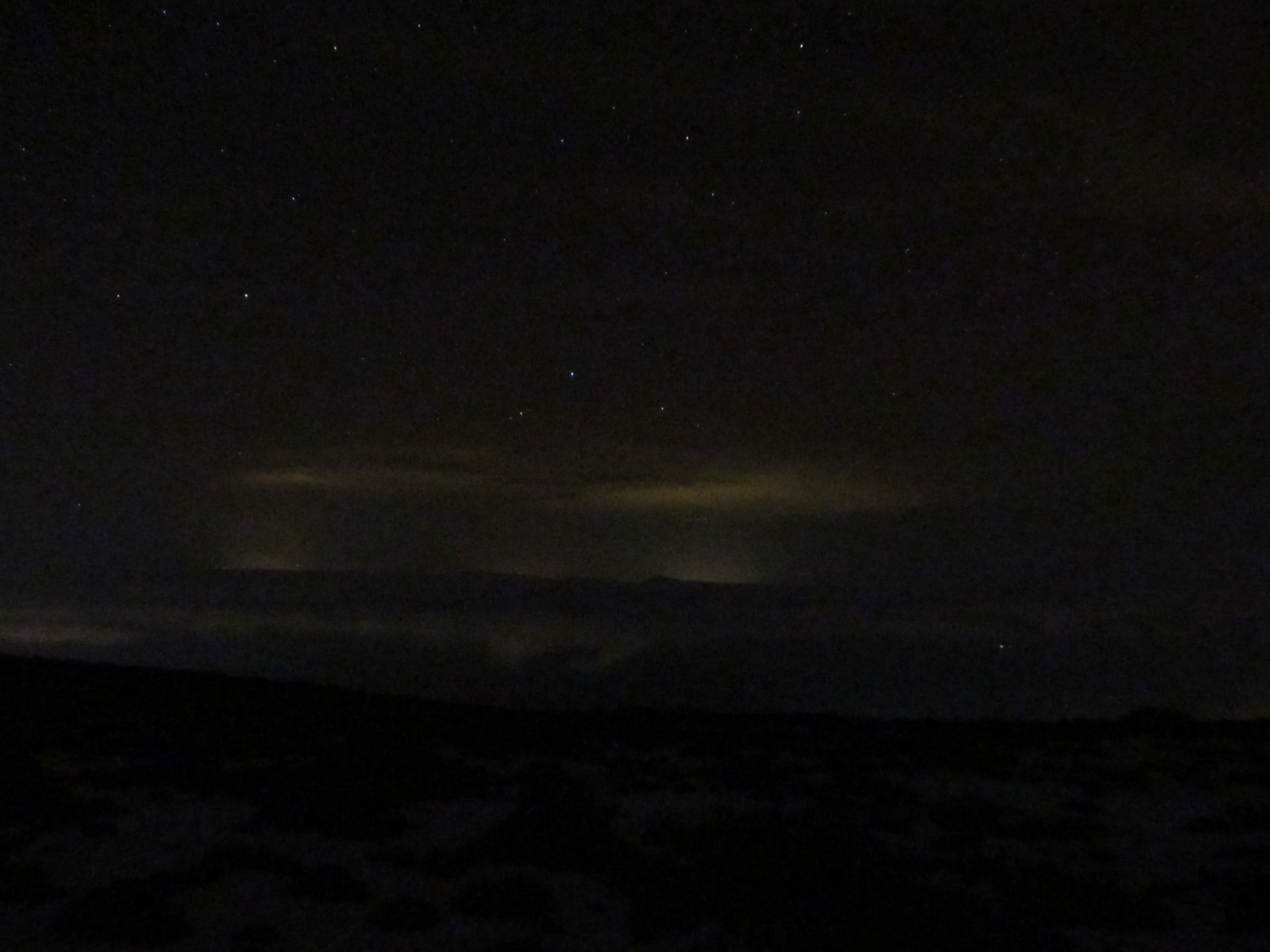
Pic. 14 High cloudiness, which usually encircles the lowest parts of the Tenerife is able to prevent the night sky by artificial lighting. Other lights from Gran Canaria were visible.
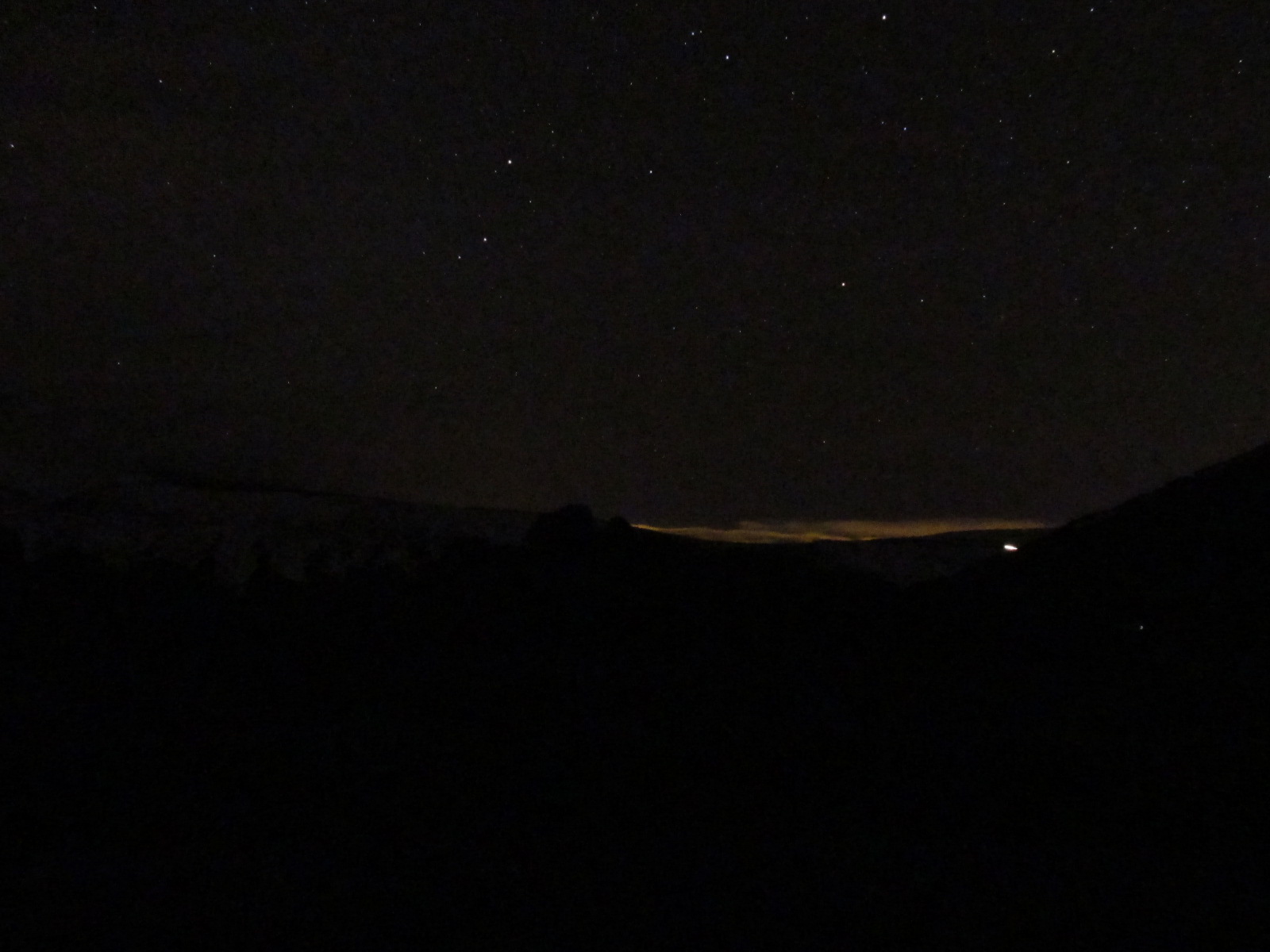
Pic. 15 View on the western part of the sky with clouds backlit by artificial lighting. The Aries constellation on the west.

Pic. 17 The strongest light glow was seen above Santa Cruz de Tenerife (northeast horizon with Arcturus rise on the right).
Unfortunately, my equipment was really poor. I had a compact digital camera only – Canon Powershot SX 130 IS, which allowed me to gain pictures with ISO 1600, F3.5, and 15s. In spite of the lack of proper equipment, I was able to cover the constellations not possible to see from Poland or the United Kingdom like whole Scorpius, Corona Australis, Centaurus, Kil, Vela, etc. The biggest success was to see the northern part of the Crux constellation, which rises just above the horizon. I saw the Agena star (situated next to the Toliman star) also.
This is possible from there due to atmospheric refraction and a drop in the horizon. The Crux was visible before 4.30 a.m.
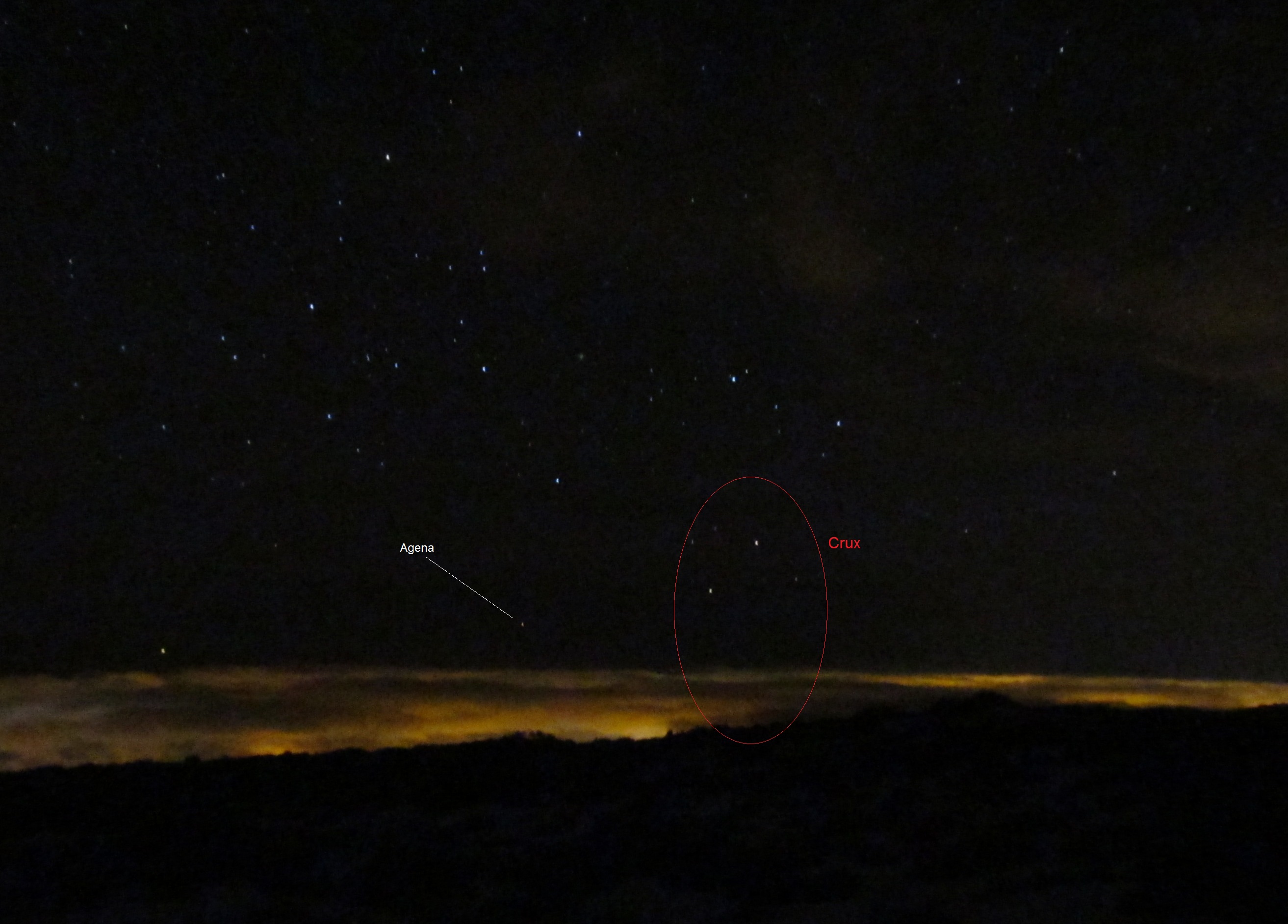
Pic. 18 The Crux and Centaurus saw from the Tenerife. The Crux is marked by red on the right and the Agena star on the left.
The last part of my observation was the dawn. I concentrated on determining the proper moments of twilight when light density changes and allows us e.g to see the stars, and objects or read books. This beautiful dawn occurred since around 6:05 a.m. after the weak zodiacal light was covered by cirrus clouds. I could spot some thin layer of light when the Sun was jet 20 degrees below the horizon! The atmosphere was really clear.
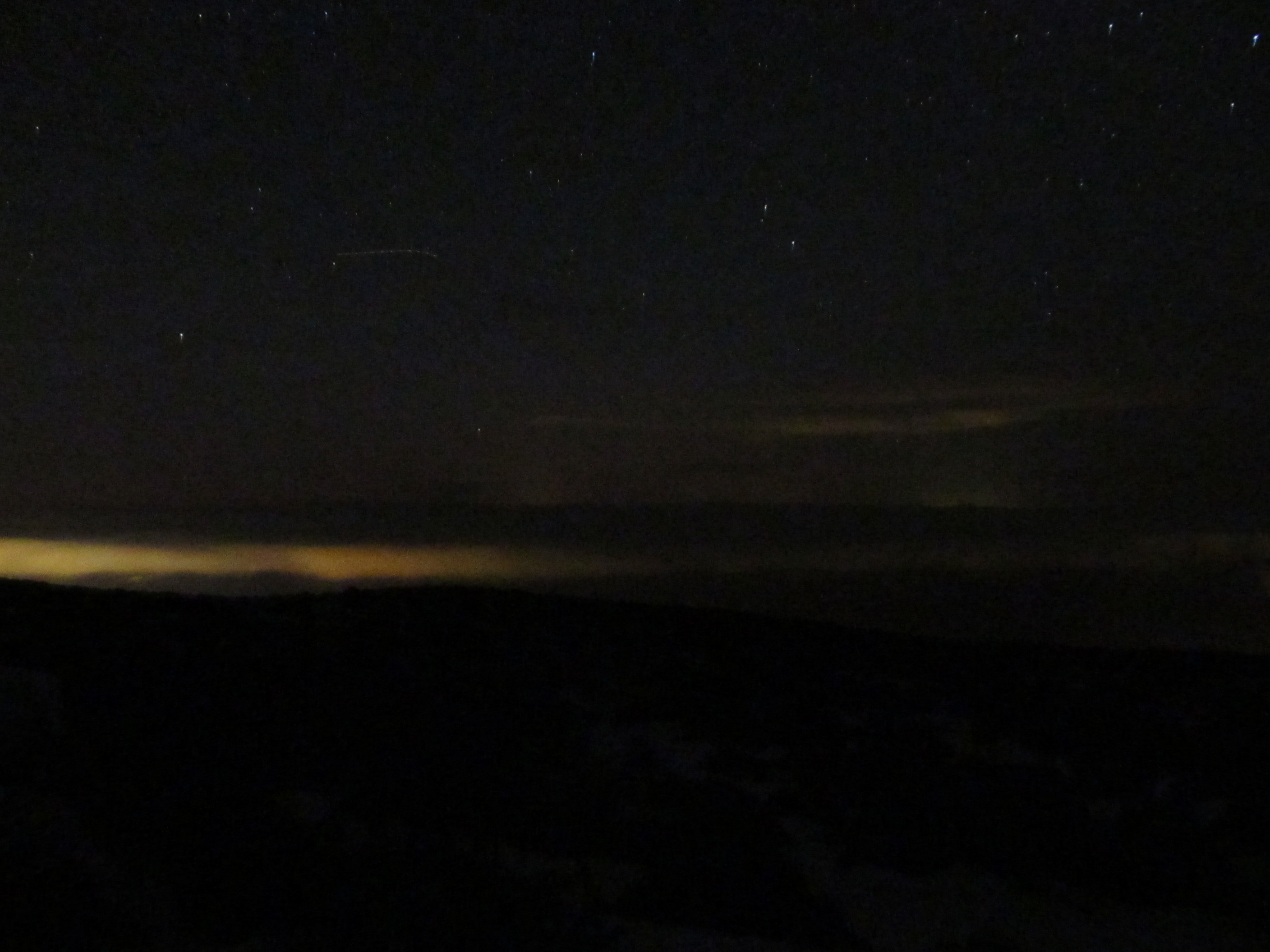
Pic. 20 A moment, when the sun was 20 deg below the horizon. The eastern sky started to get brighter. You can spot patches of cirrus cloud far away behind the lights above Gran Canaria.
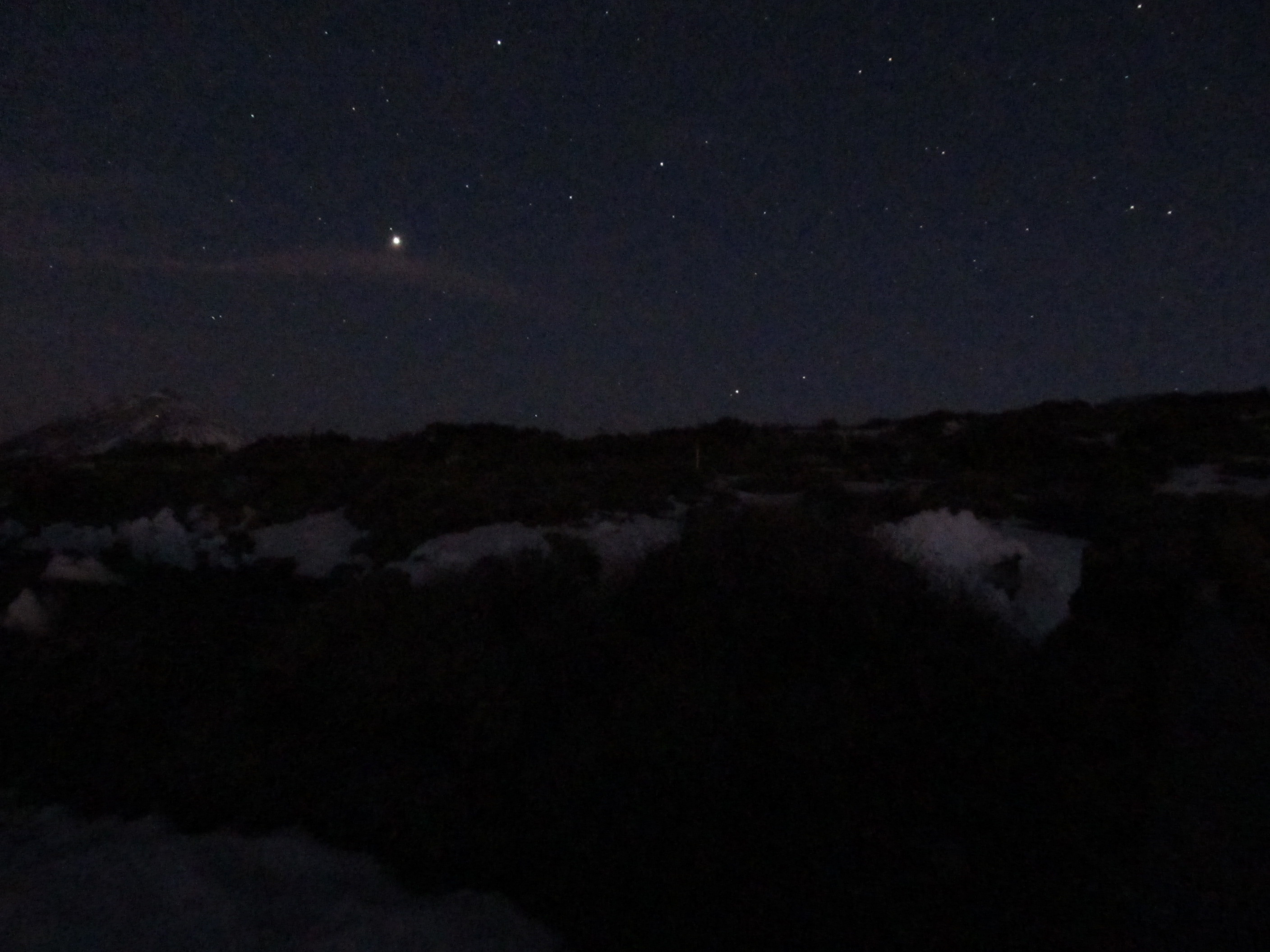
Pic. 23 Jupiter set right off the Teide summit barely visible. The sun was 16 deg below the horizon.

Pic. 24 The same view a little bit later at the beginning of the nautical dawn, 15s, ISO 1600, F3.4.
When the Sun was 10 degrees below the horizon I was able to read the text without using the torch, that was amazing! However, I had to set my peace of paper a front of the dawn glow.
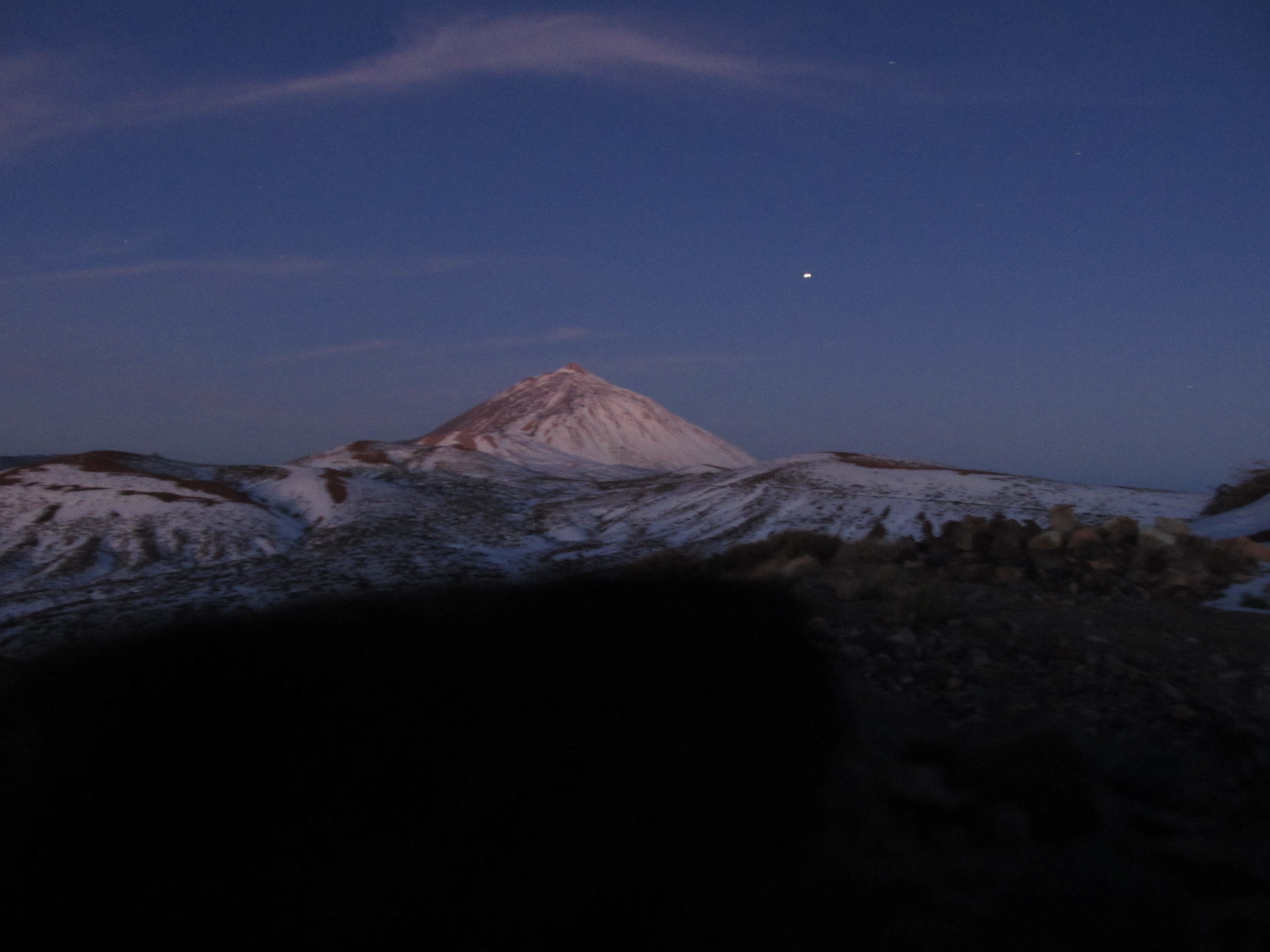
Pic. 25 The Mount Teide with Jupiter, when Sun was around 10 deg below the horizon, 5s, ISO 400, F3.4.
Subsequently, the next parts of the dawn were also stunning. When the Sun was 8 degrees below the horizon I spotted the first sunlight on the cirrus cloud far away above the horizon (probably above the western Sahara!).
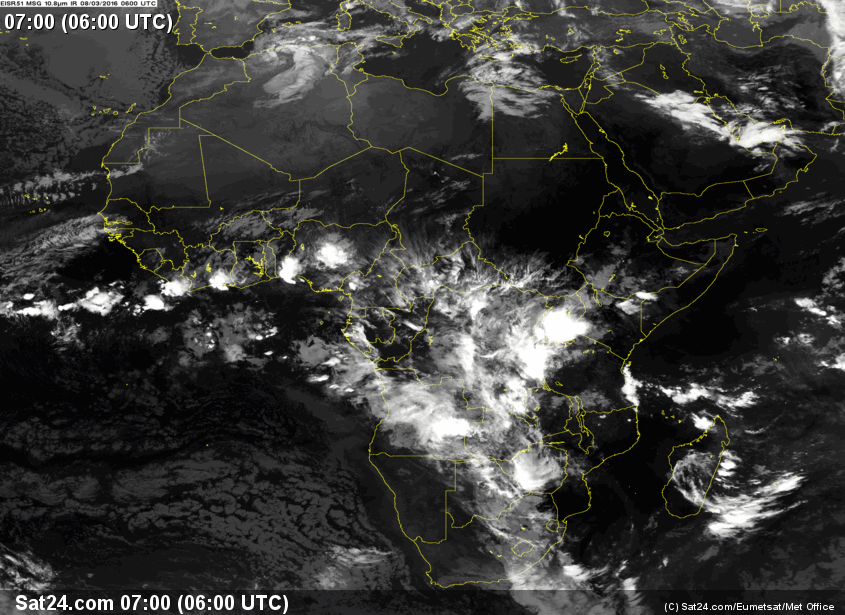
Pic. 27 Cloud coverage above Africa 8th March 2016. See small cirrus layers between Canary Island and the western African coast (sat24.com).
Thereafter I was trying to capture a 28-day-old crescent Moon, that rose shortly before sunrise. That was a day before the total solar eclipse in Indonesia, so I thought, that more than 20 hours before it the Moon would be visible. I didn’t spot it either on-site by the naked eye or on my photos afterward. Possibly it was gone behind some patches of cirrus clouds, that covered the eastern sky partially.
Seeing the Teide summit like a stone’s throw away I spotted a red light on the very top. That was the sunrise! Around 2,5 minutes before Sun was seen from my position. Meanwhile, clouds rose up and drifted a front of the mountain making beautiful glory!
Right after sunrise we left that cold place and headed for our next destination –car rental at Tenerife North airport.
If I have the opportunity to back to Tenerife I will definitely choose the summer or autumn term, free of snow, and carry out those observations again with much better equipment. I think, that some total lunar eclipse would be a great option to visit Mount Teide again and cover it from my original destination – Refugio Altavista mountain hut.
Mariusz Krukar
Links:
Teide Observatory – general information
Telescope from Cambridge in Teide Observatory

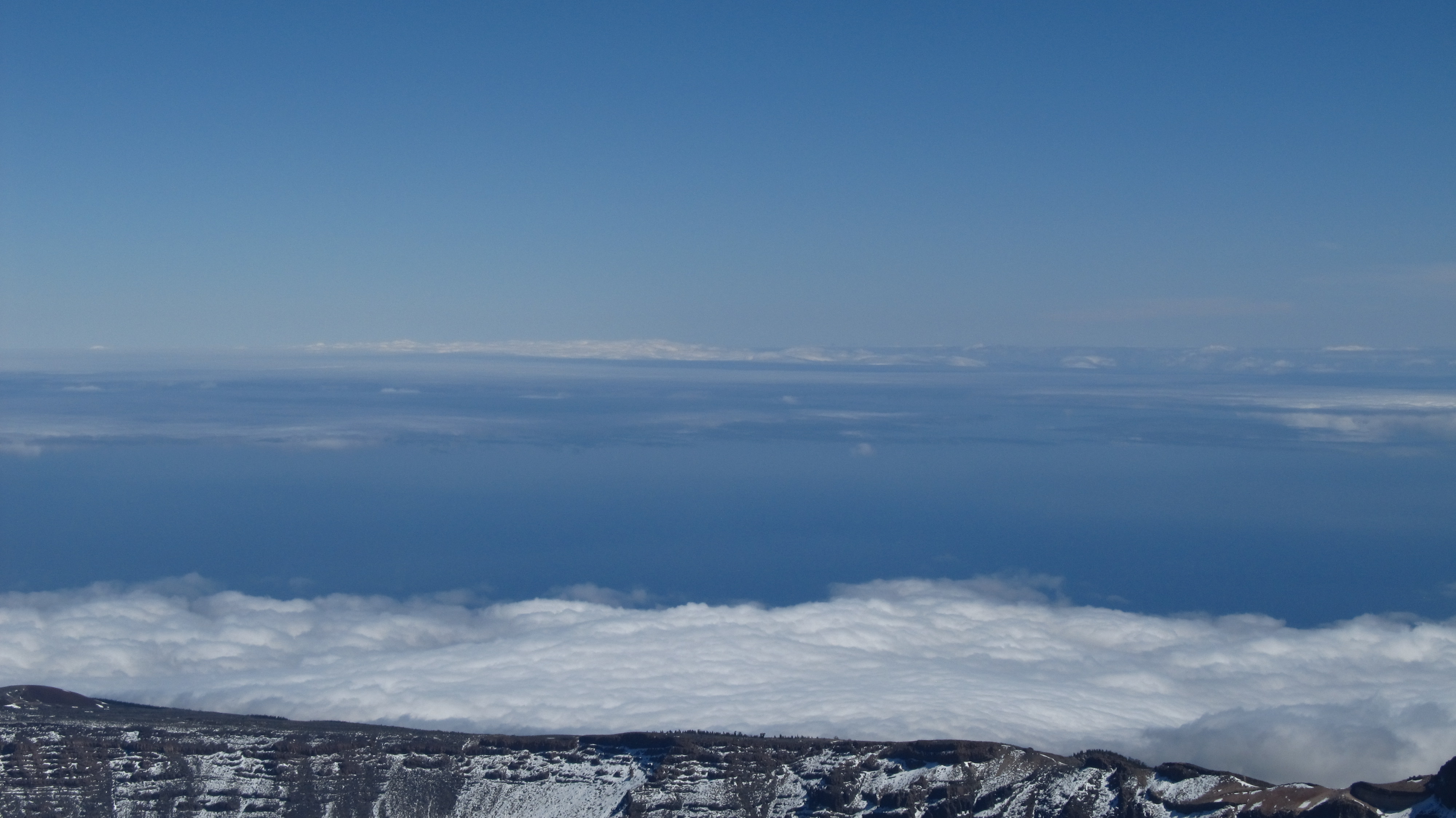
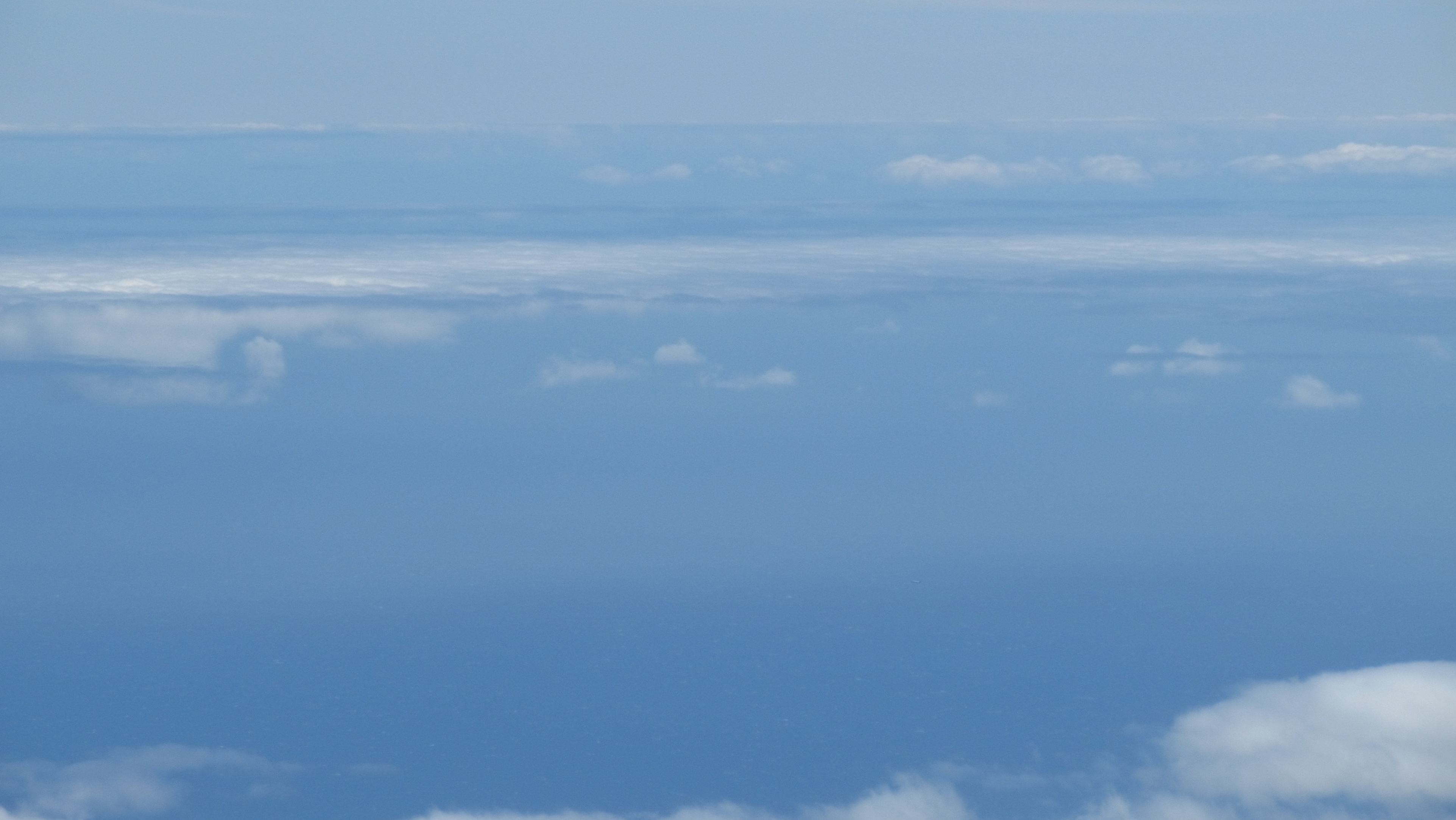
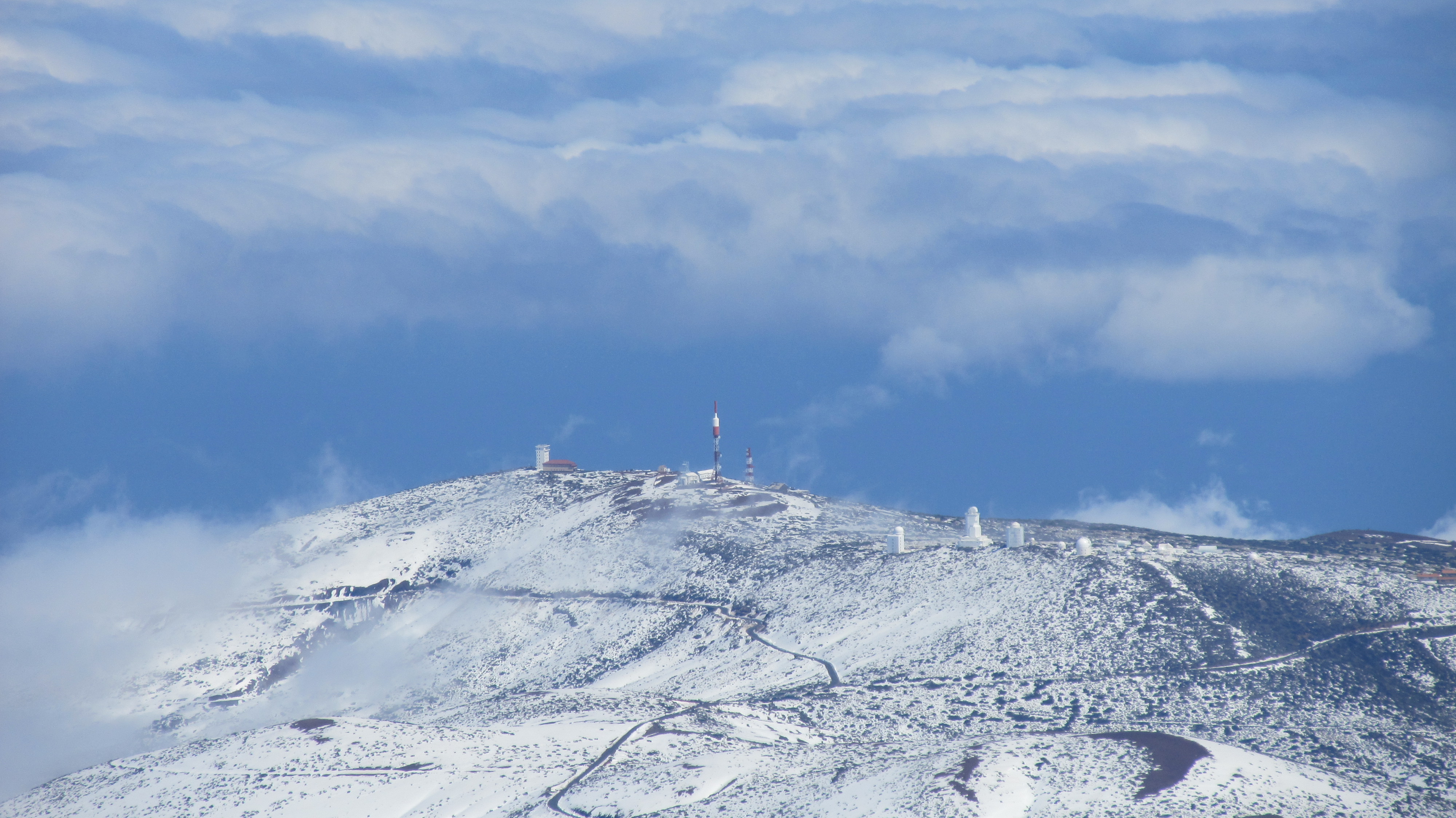
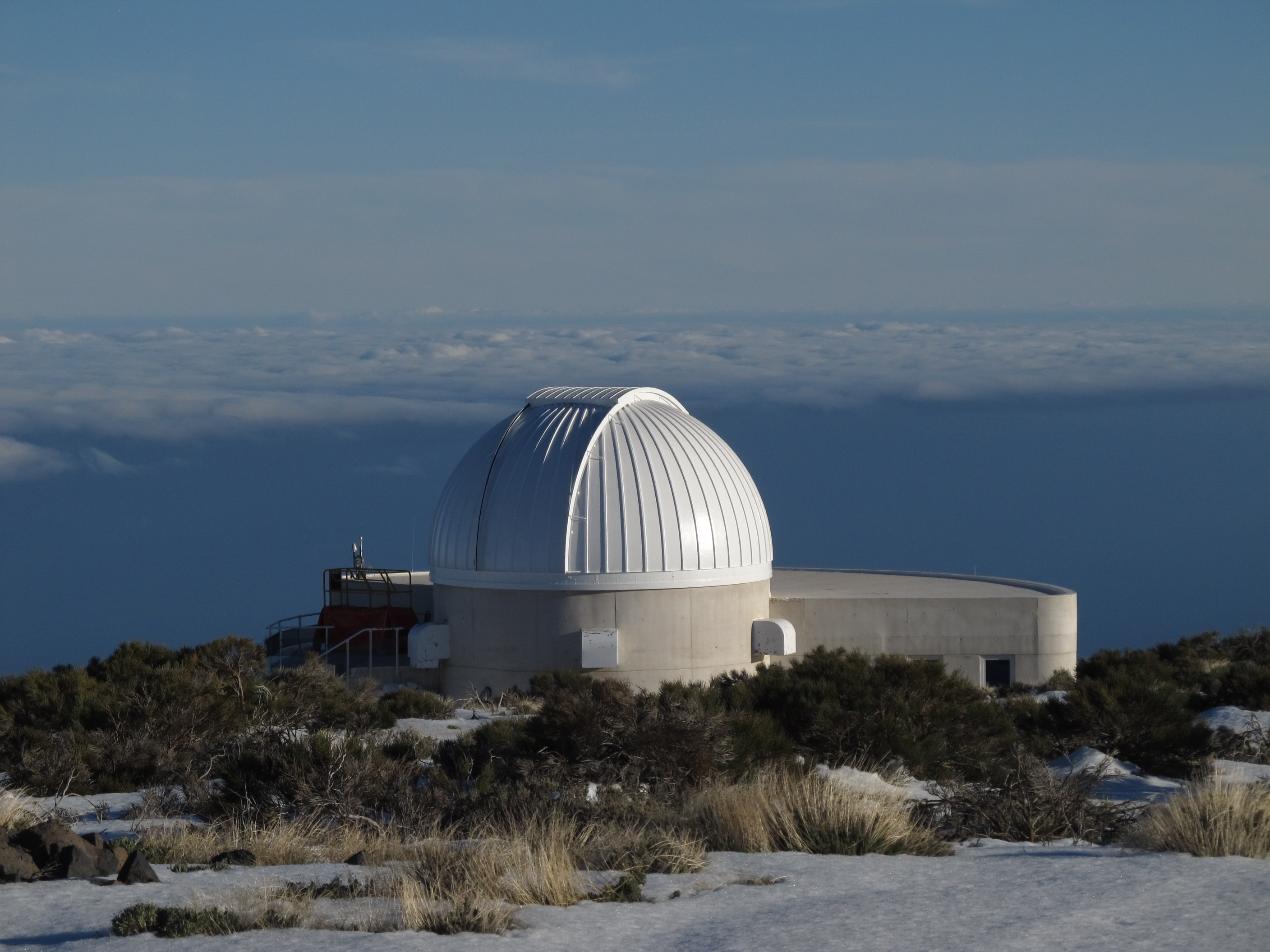




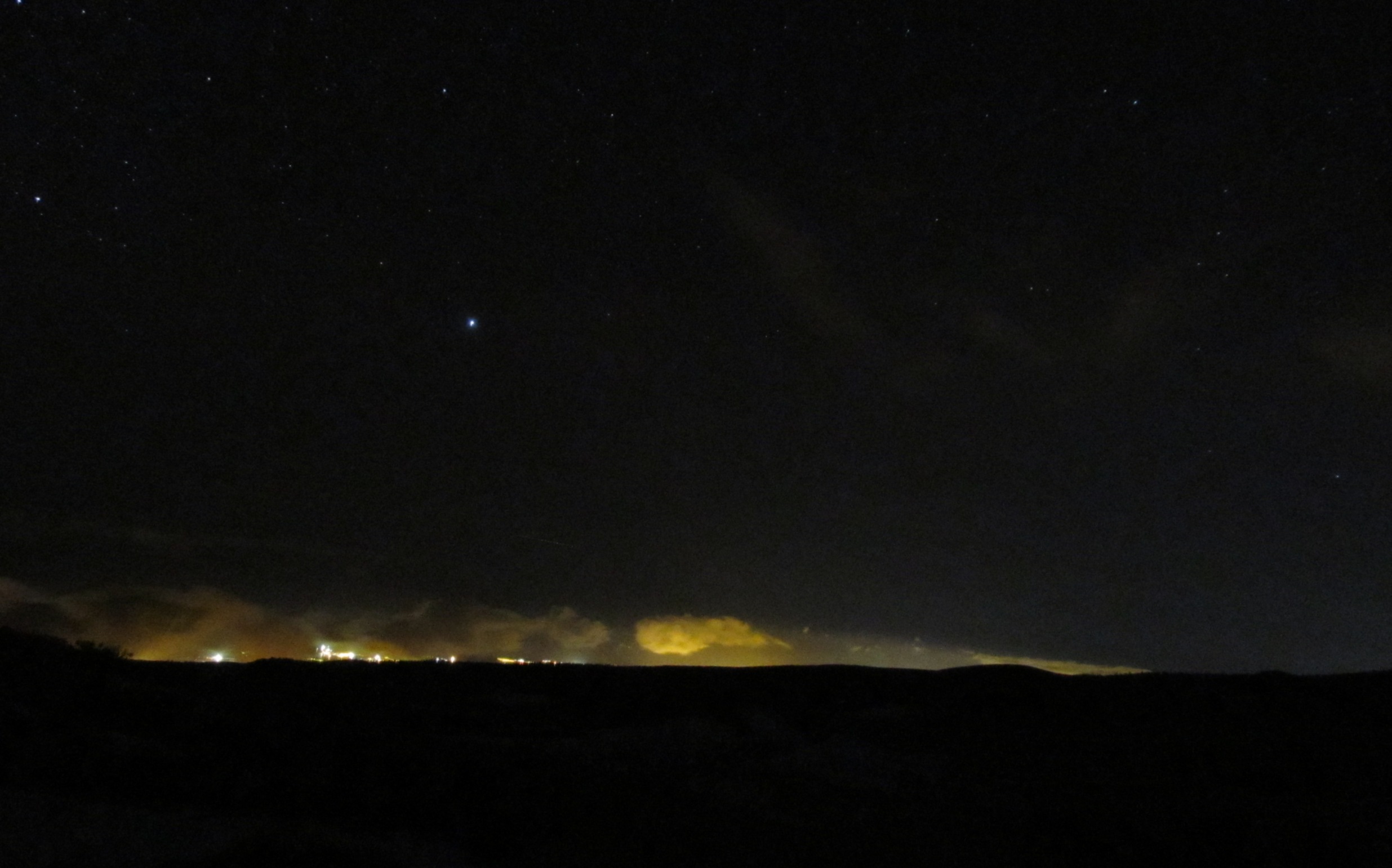

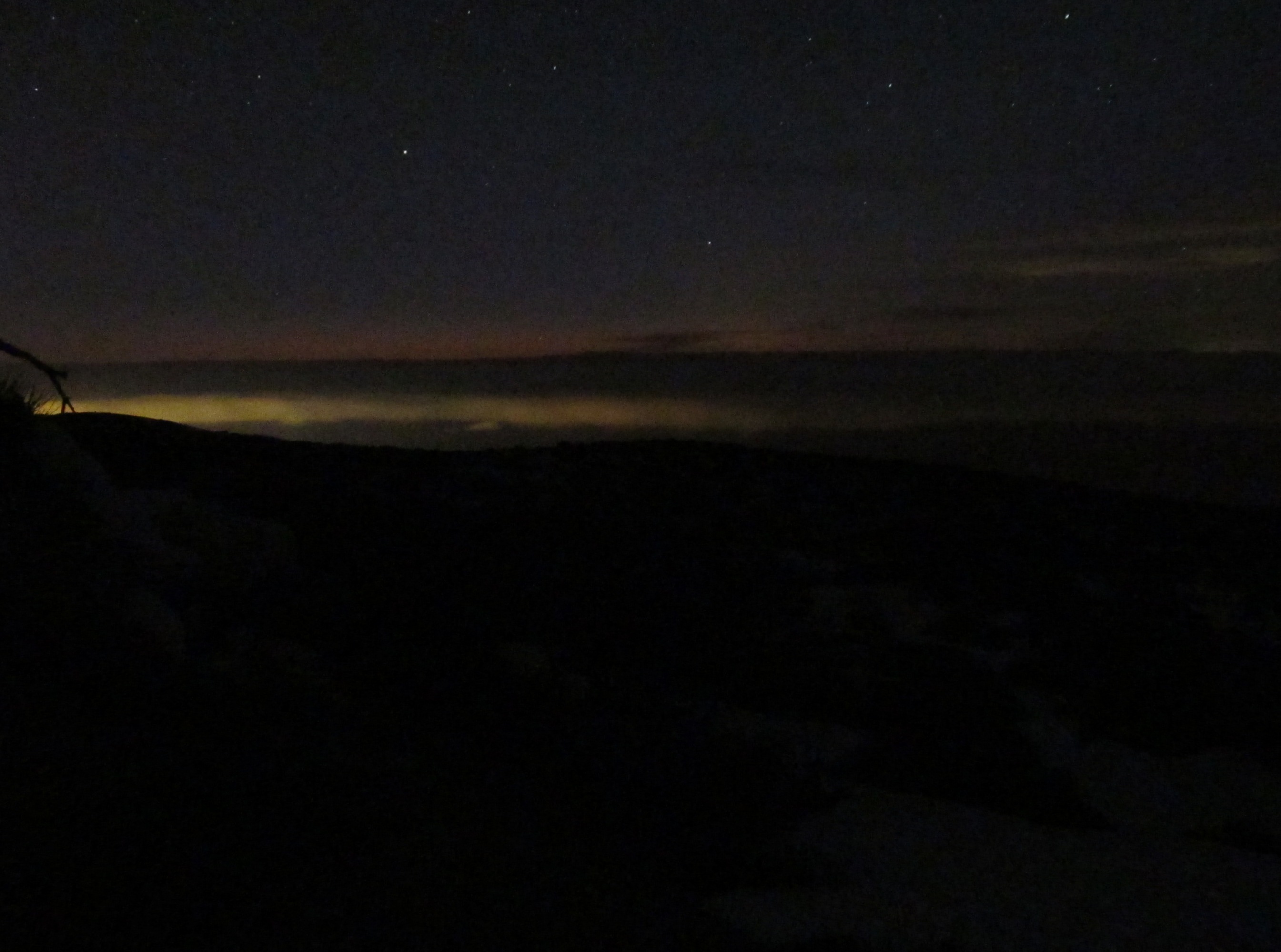
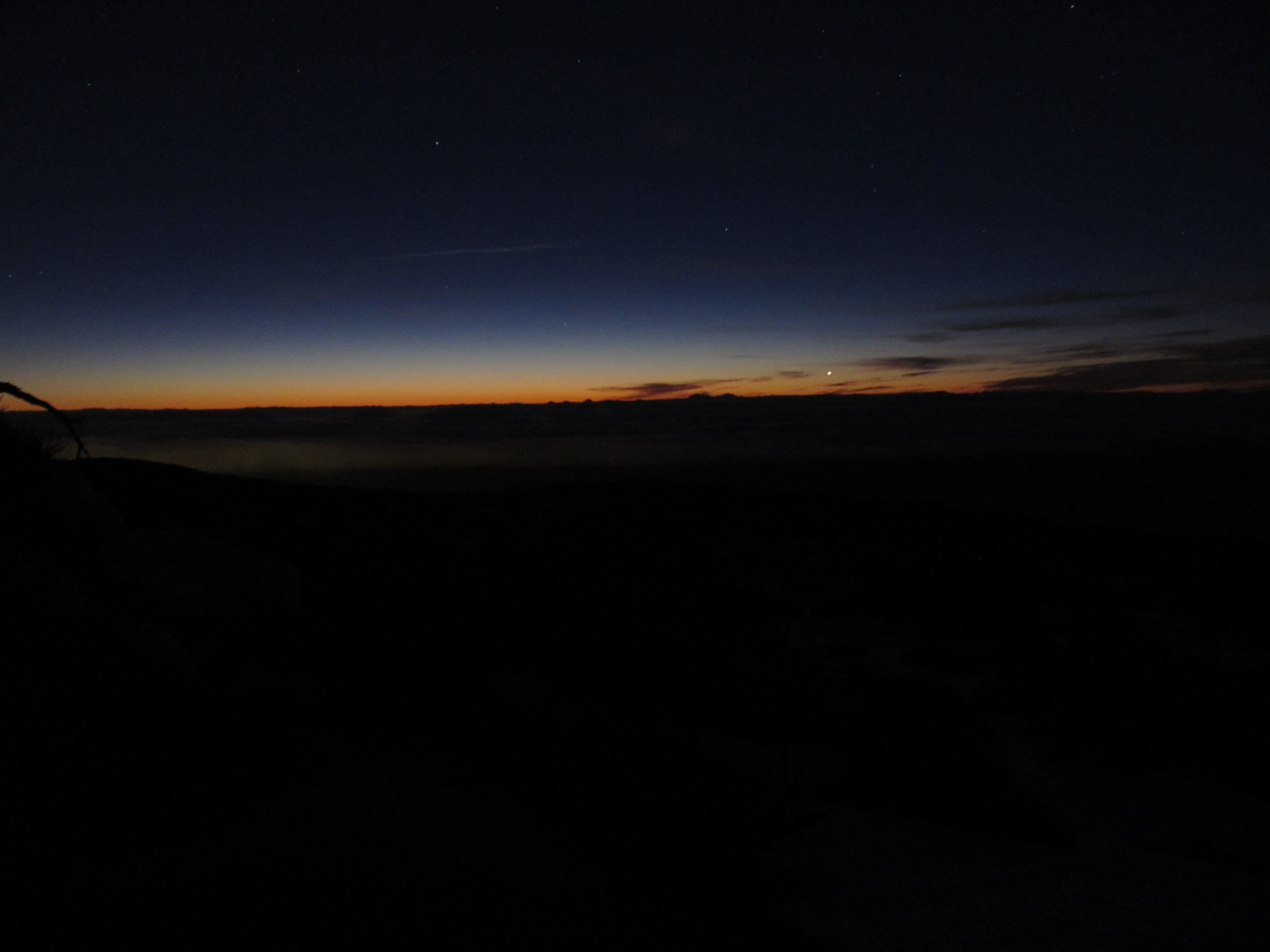
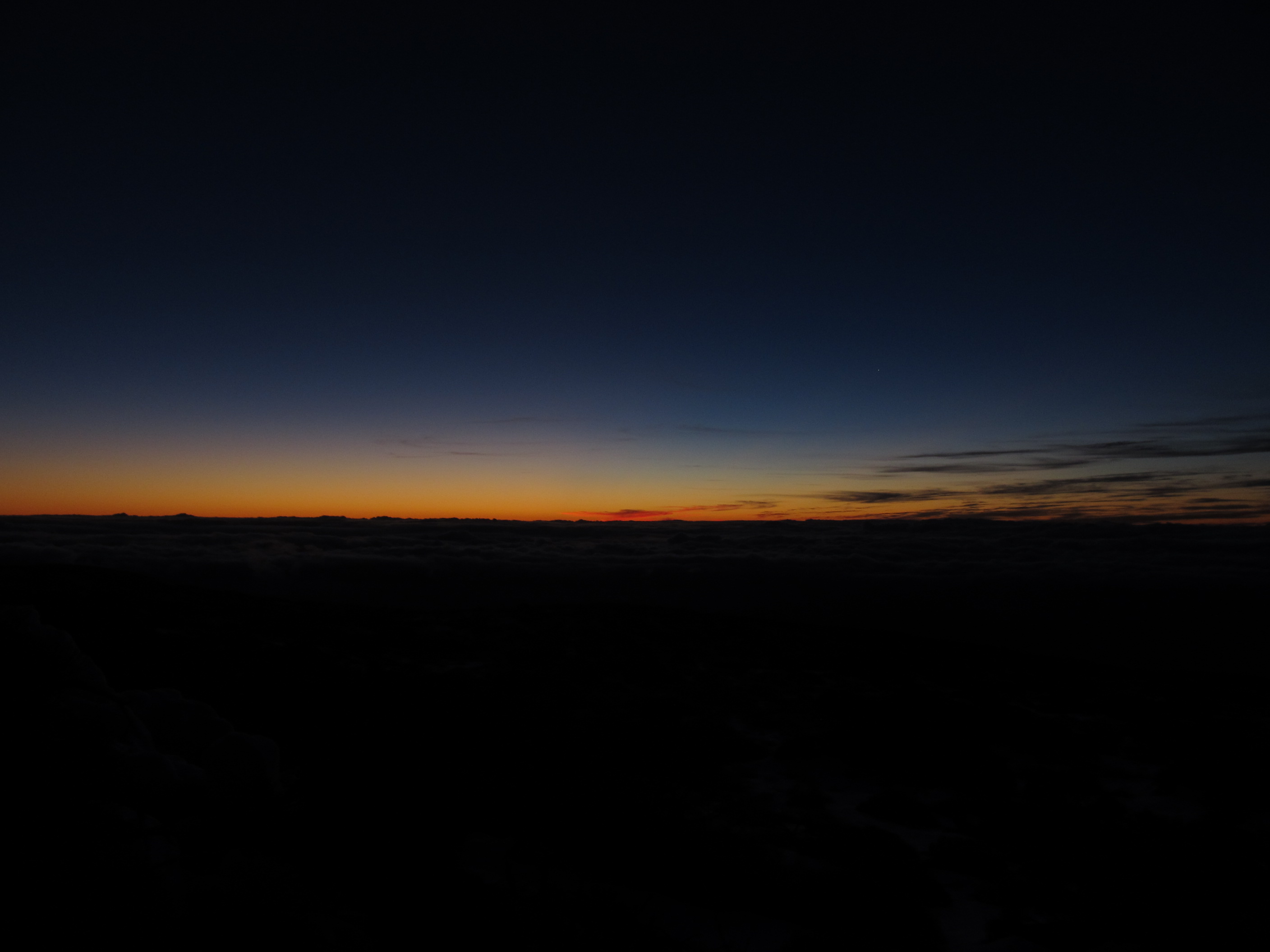

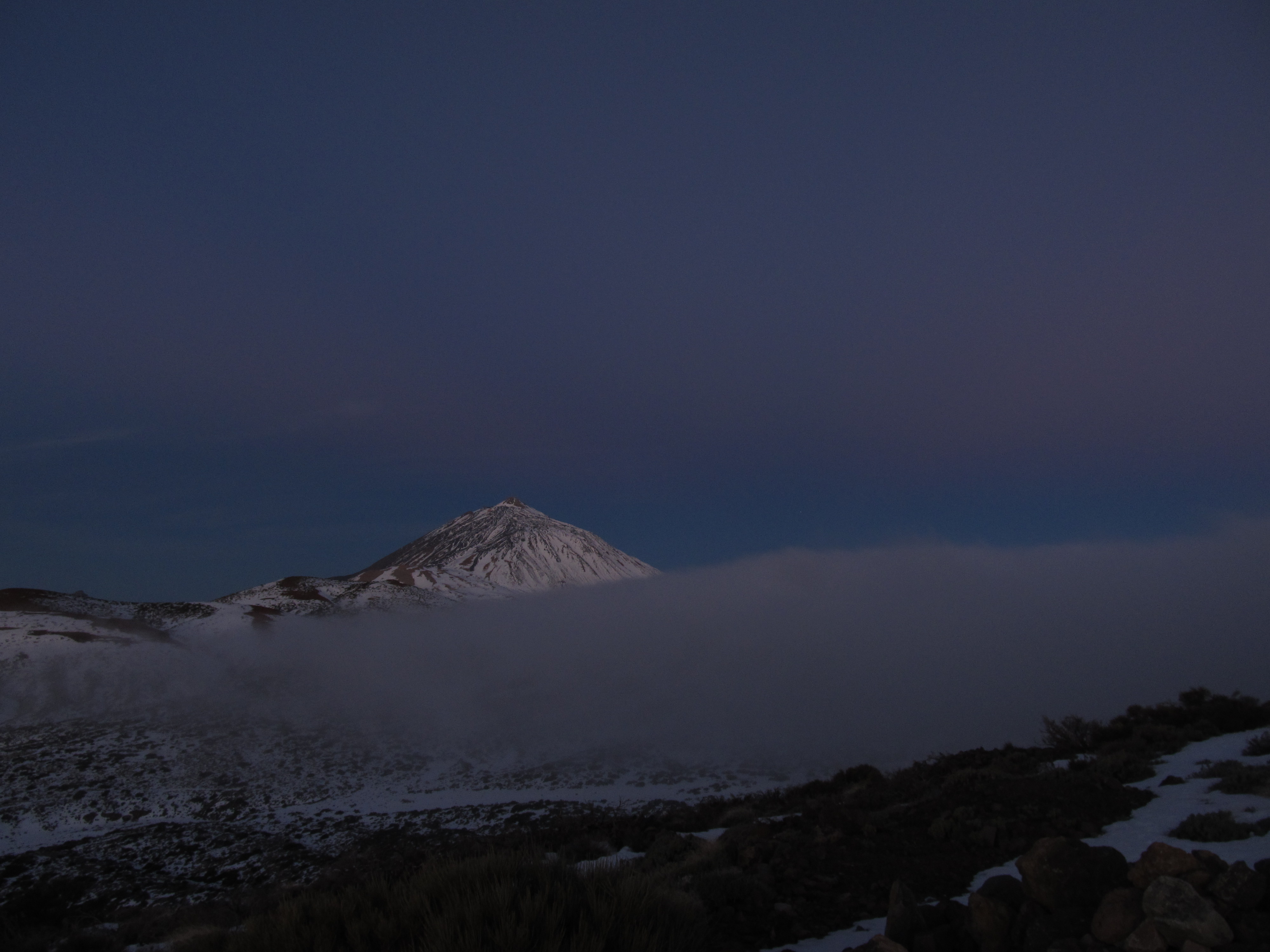
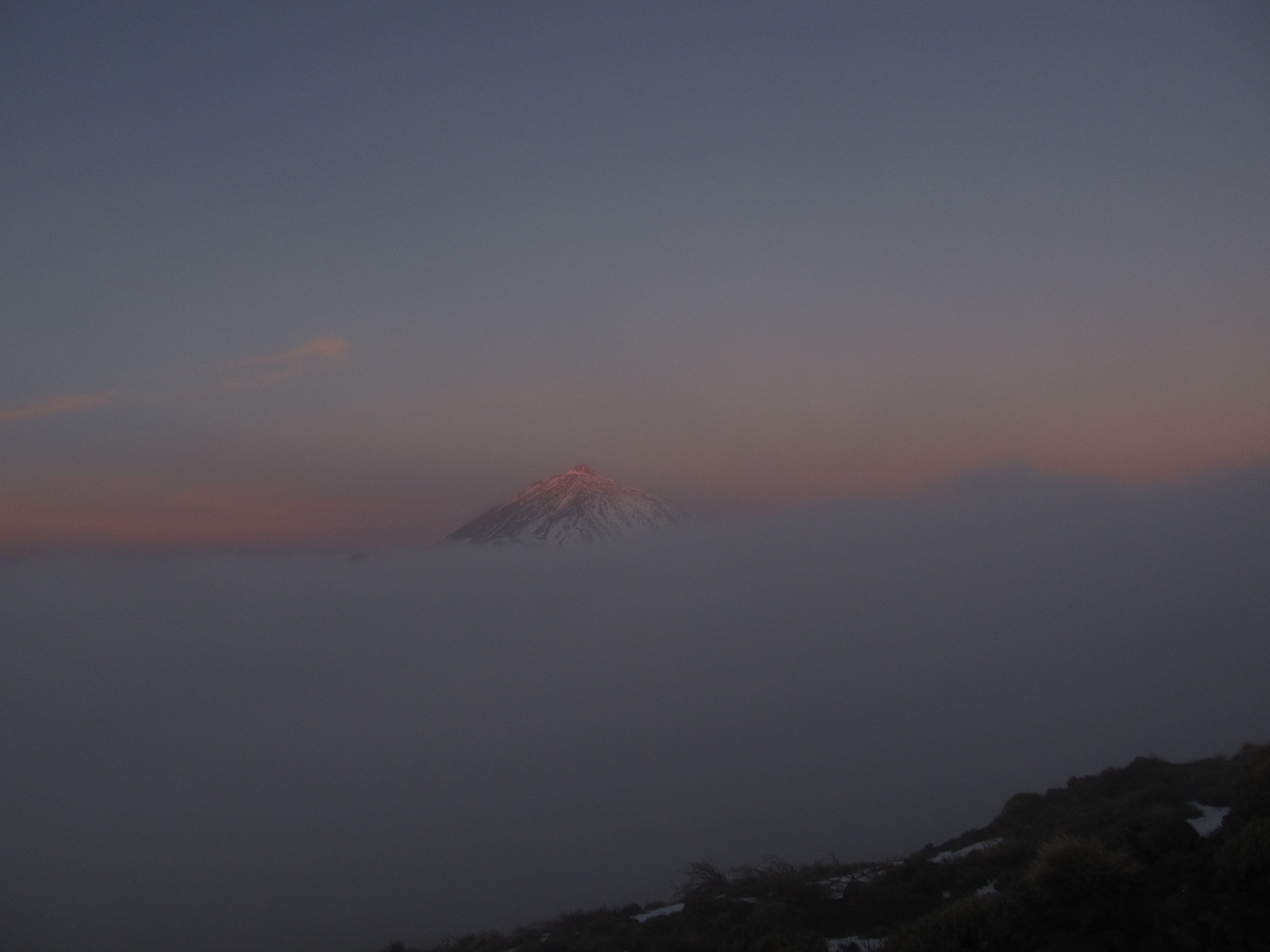
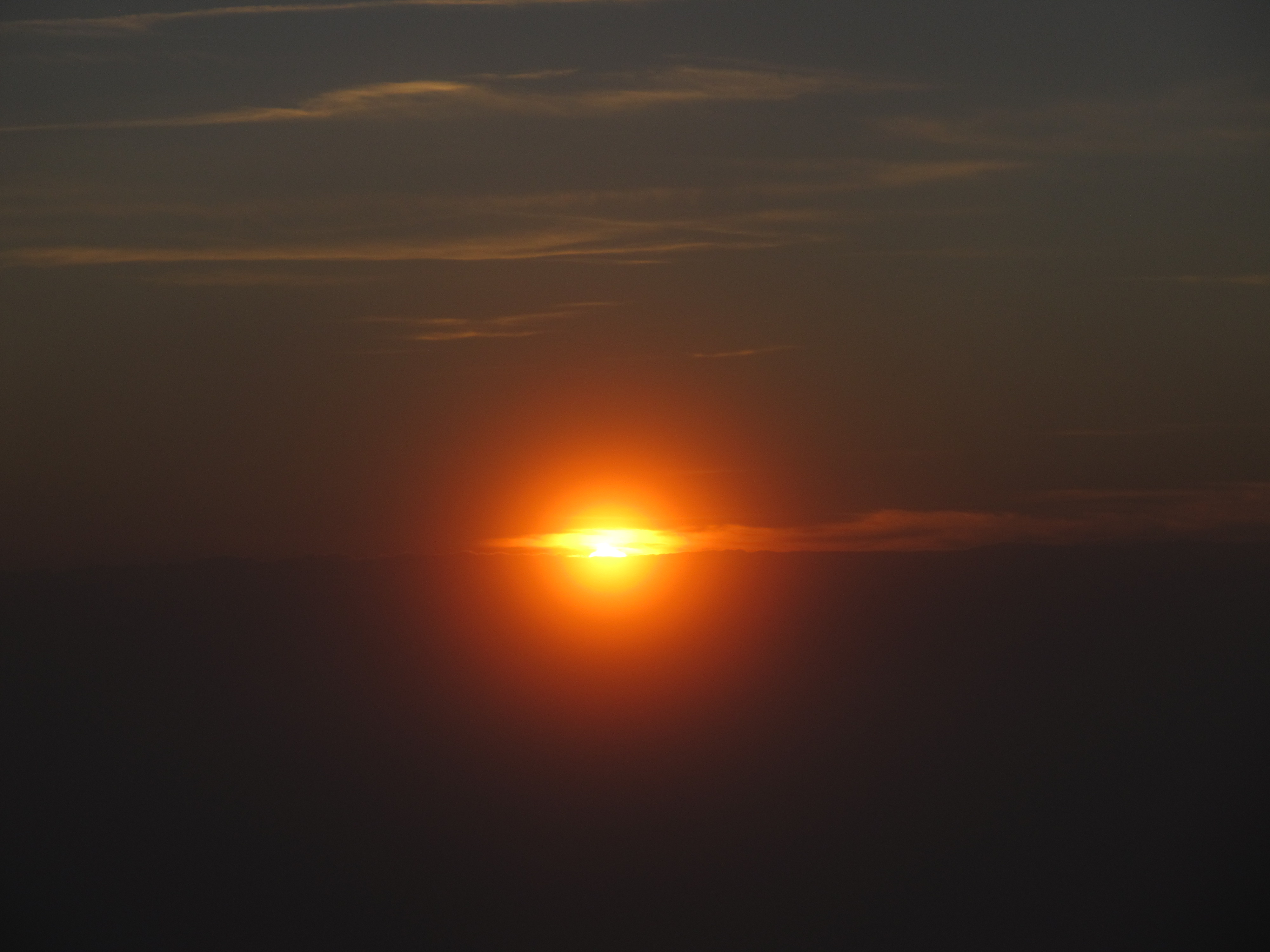
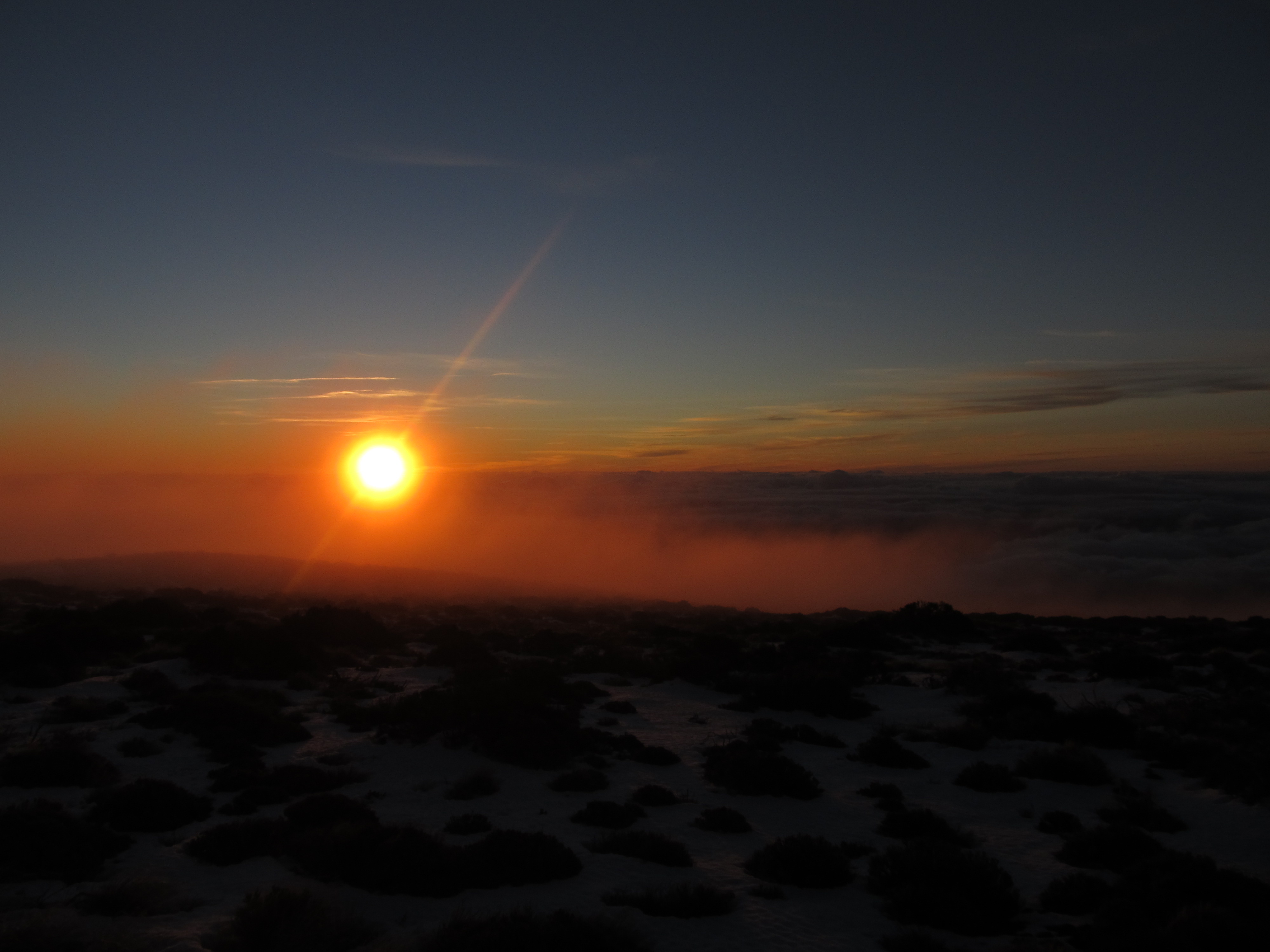
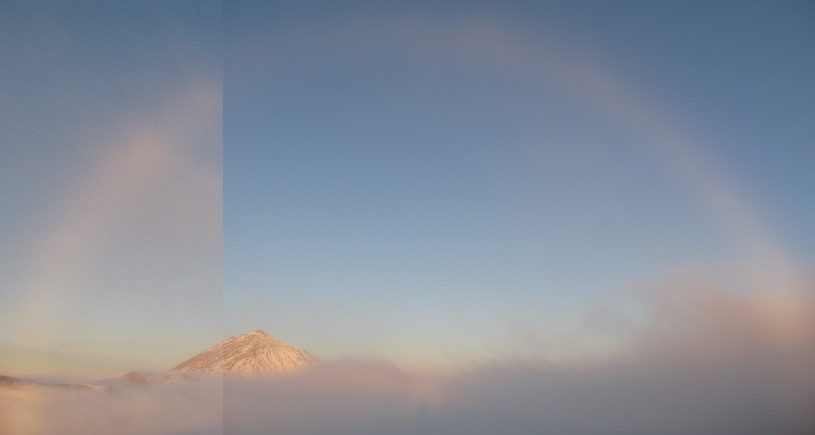
Which month exactly you visited Tenerife?
It was early March 2016. The photos at my observation venue has been taken during the night between 8th and 9th March.
Oh, my bad, sleepy eyes 🙂 It was in March! Wonder how it will be on my January visit…
I think, there is no difference between January and March, because the winter there is mild the same as well as the day length. Being on altitudes above 2000m.a.s.l you must be aware snowy conditions from time to time and frost ocassionally (up to -5 Celsius in places).